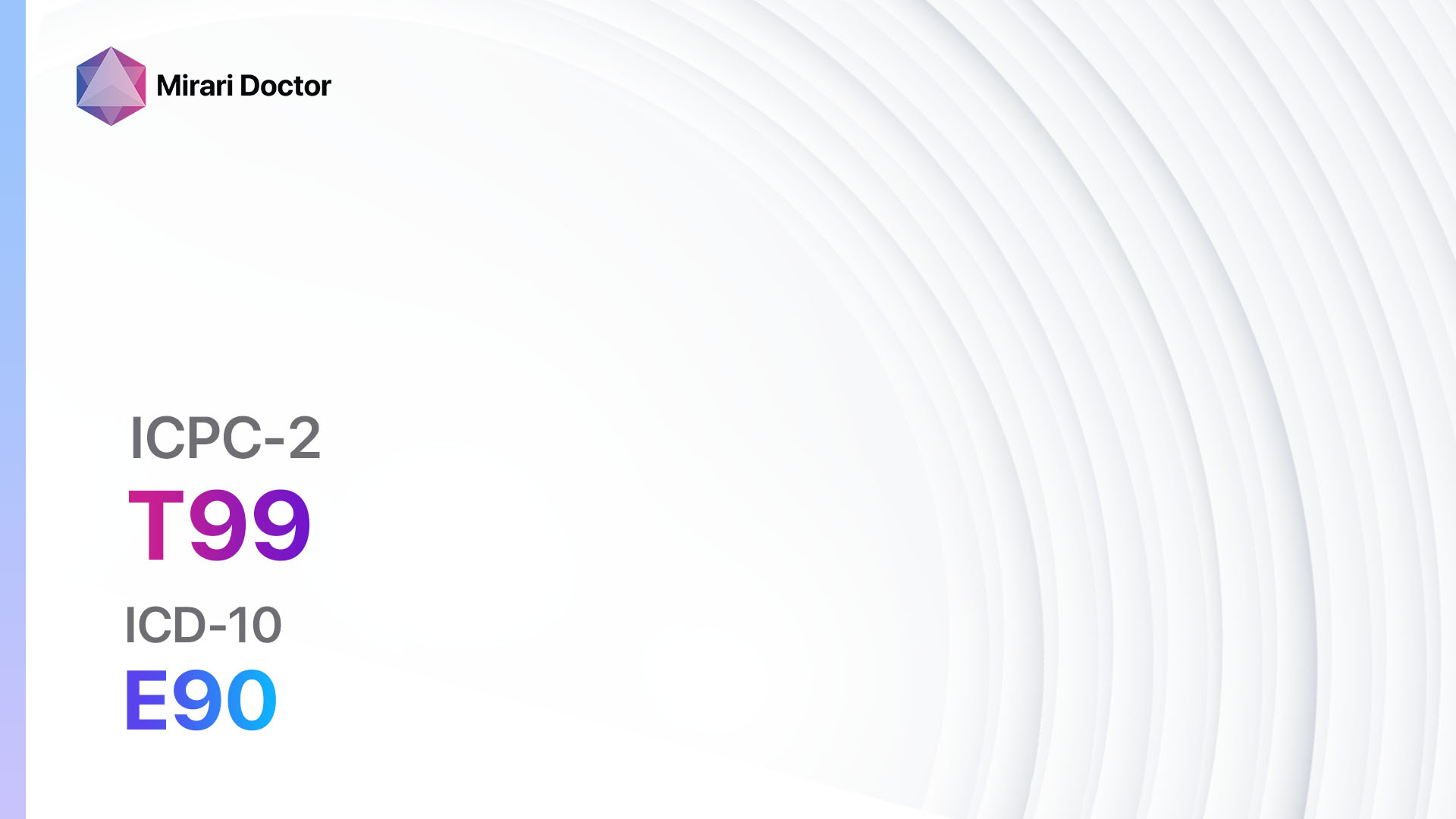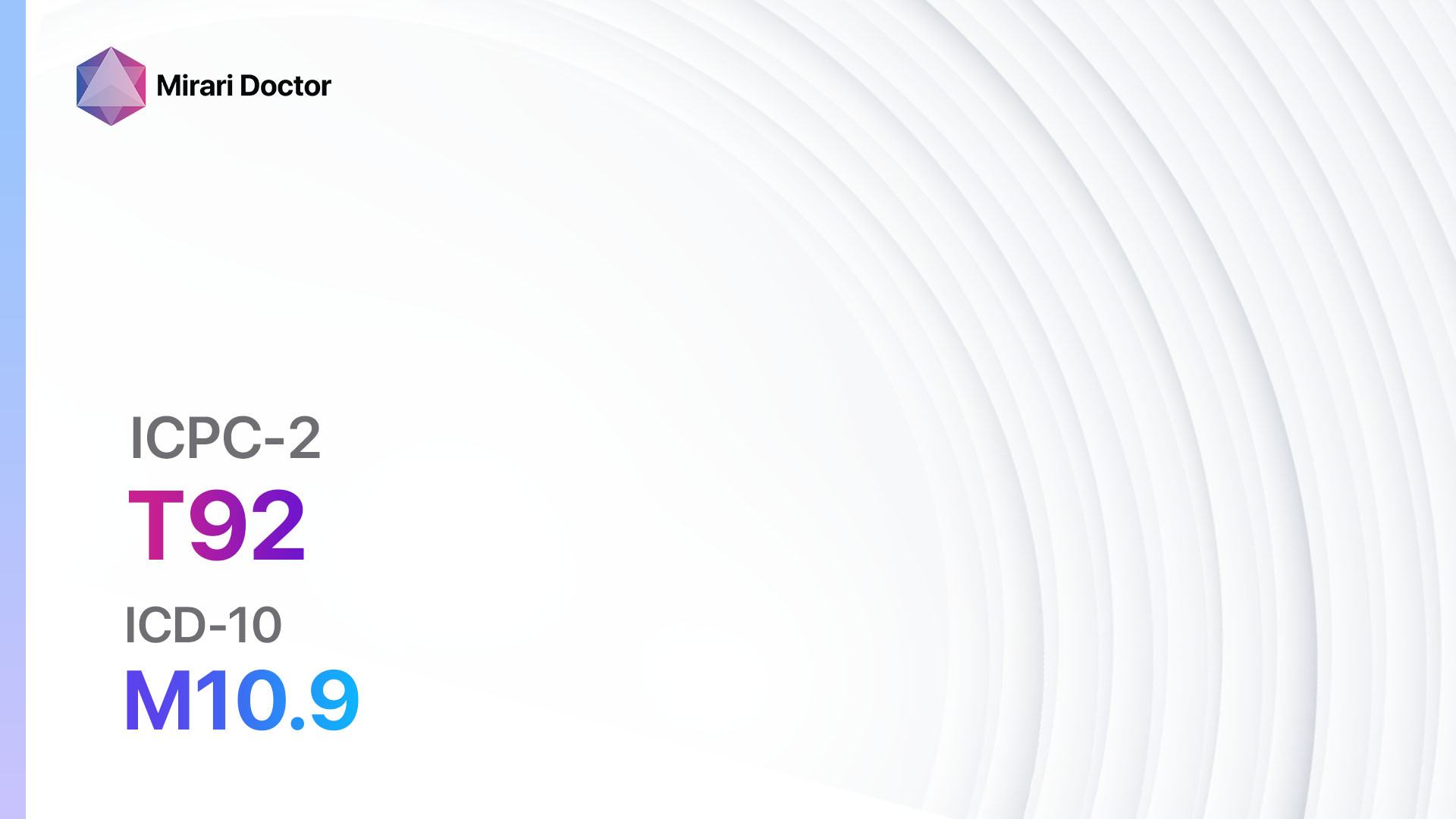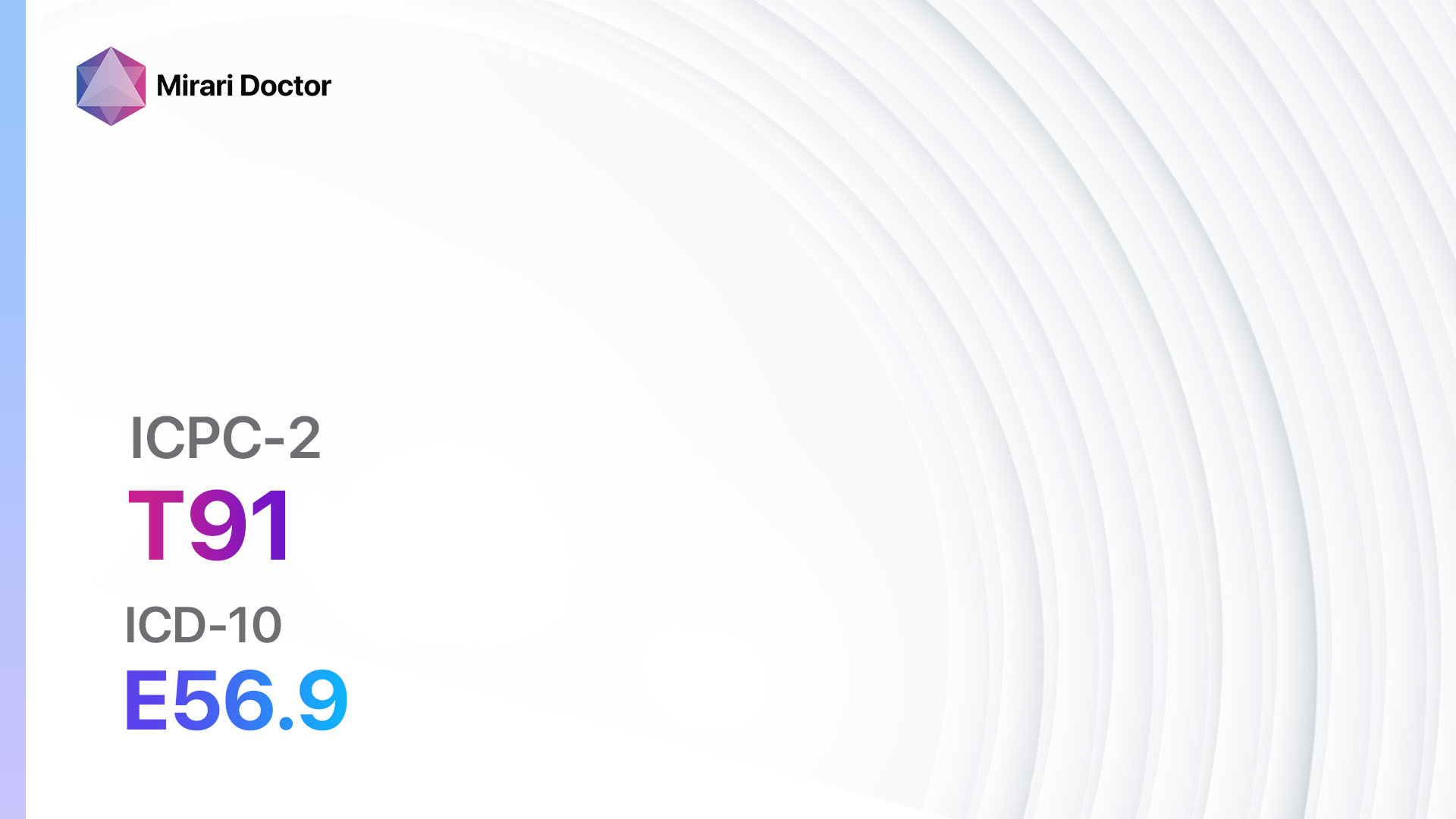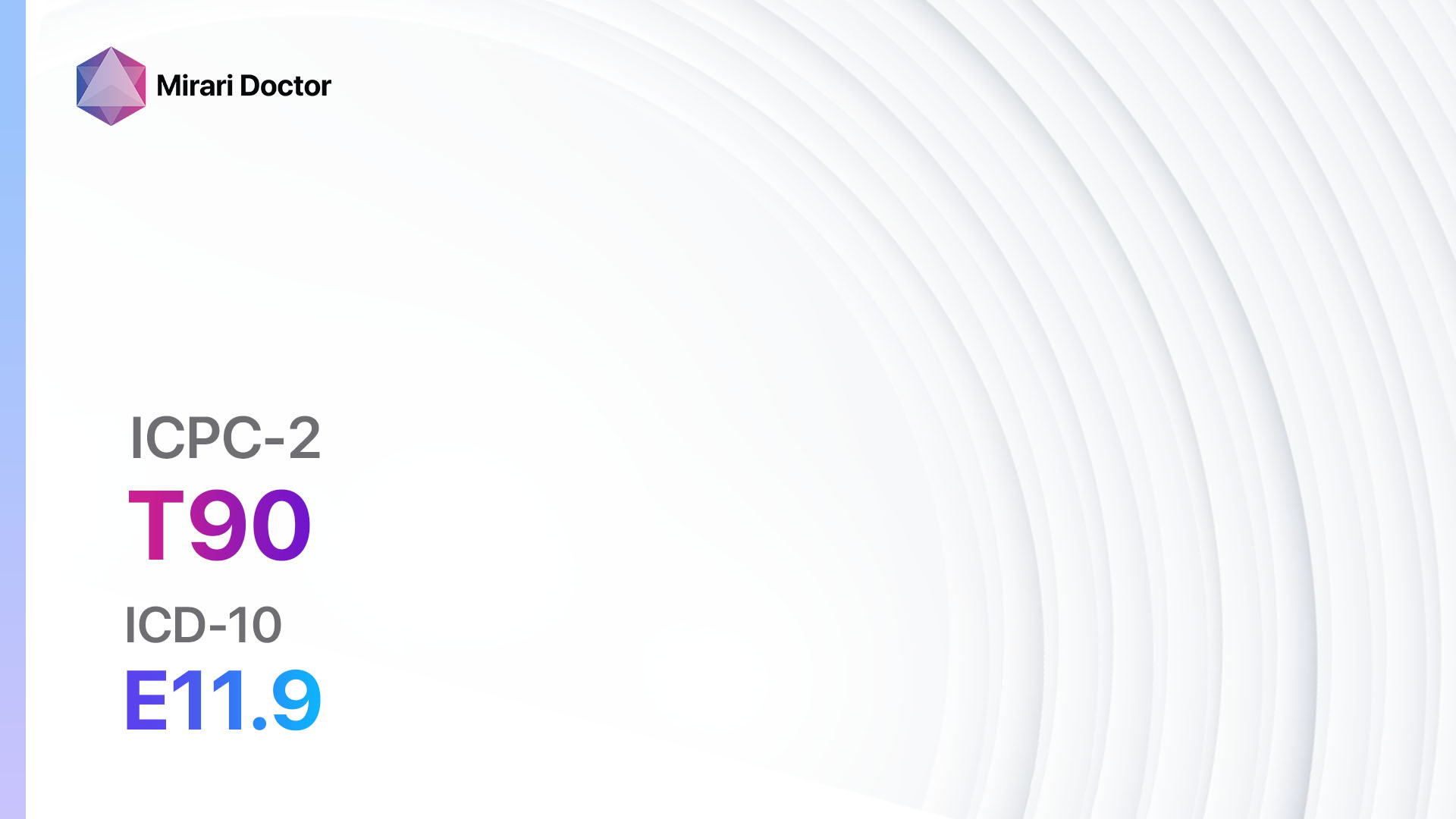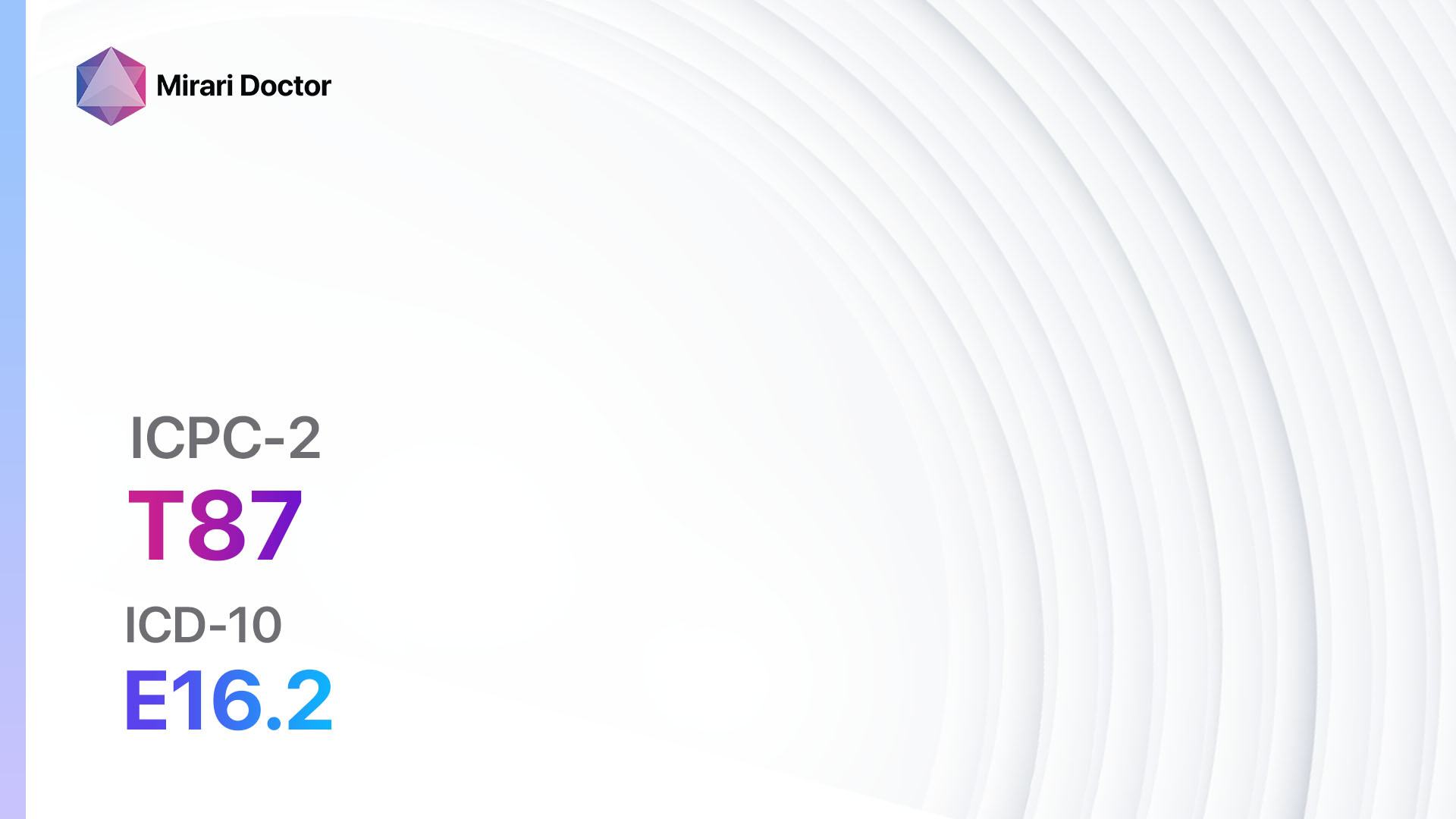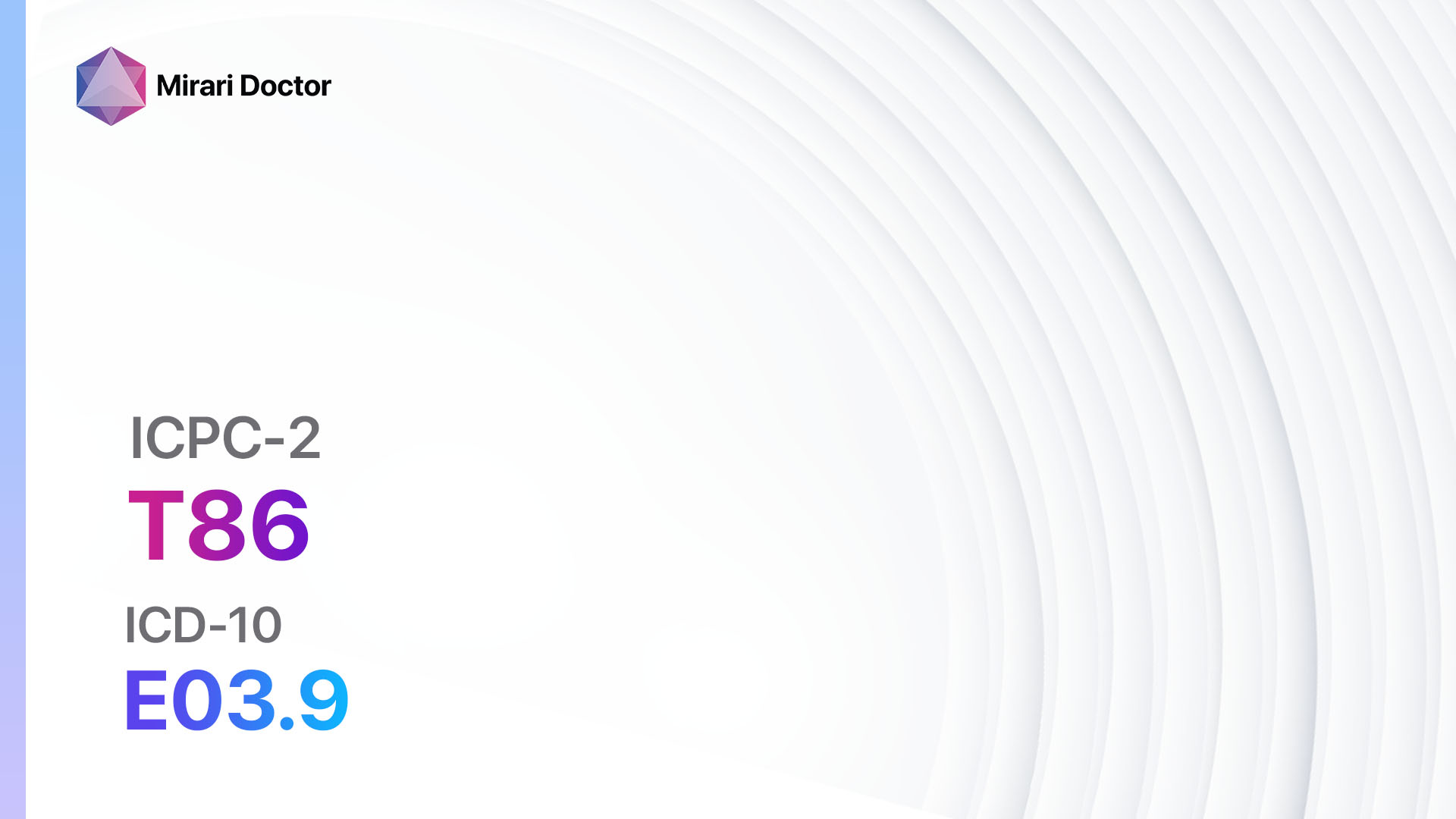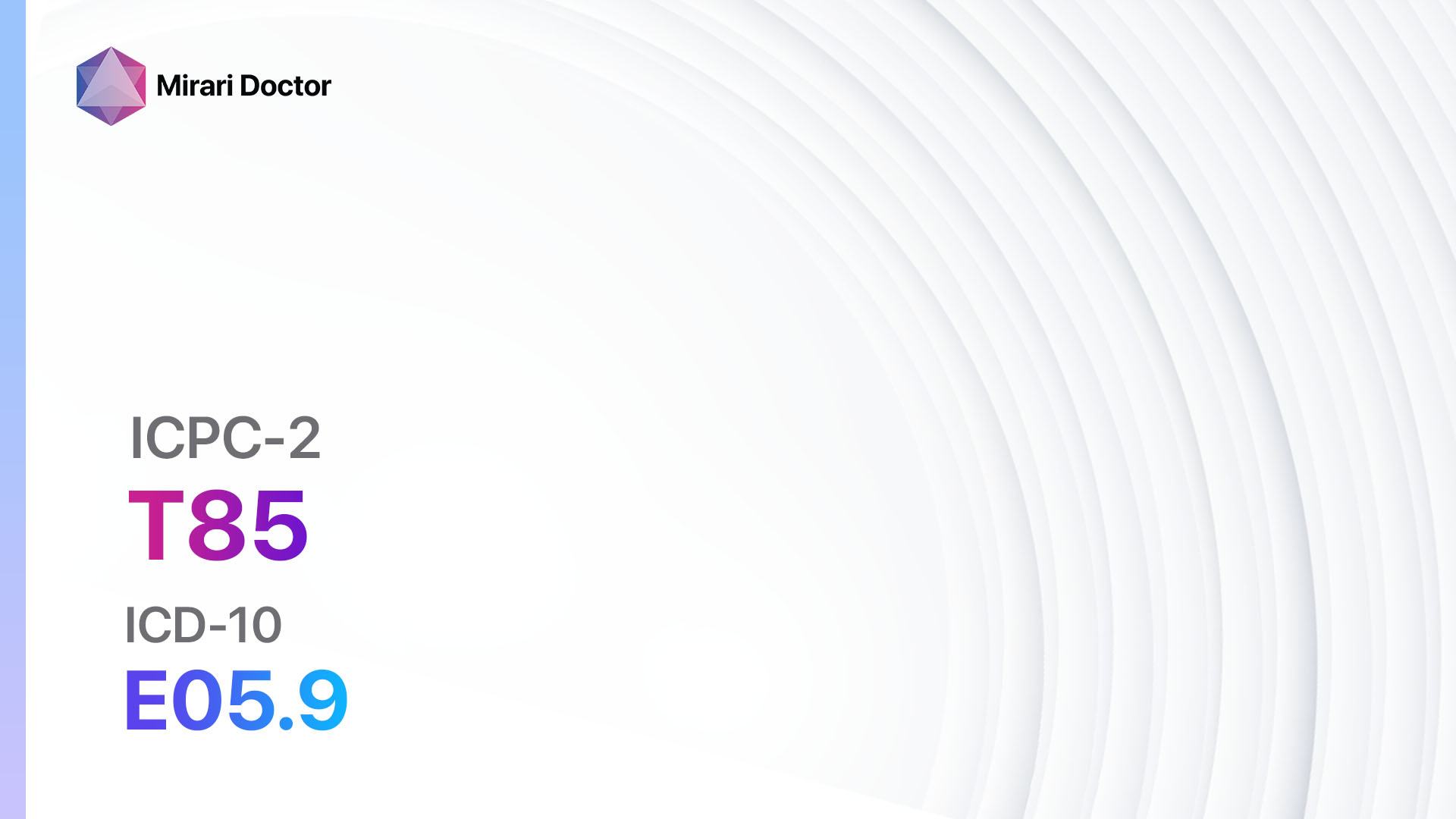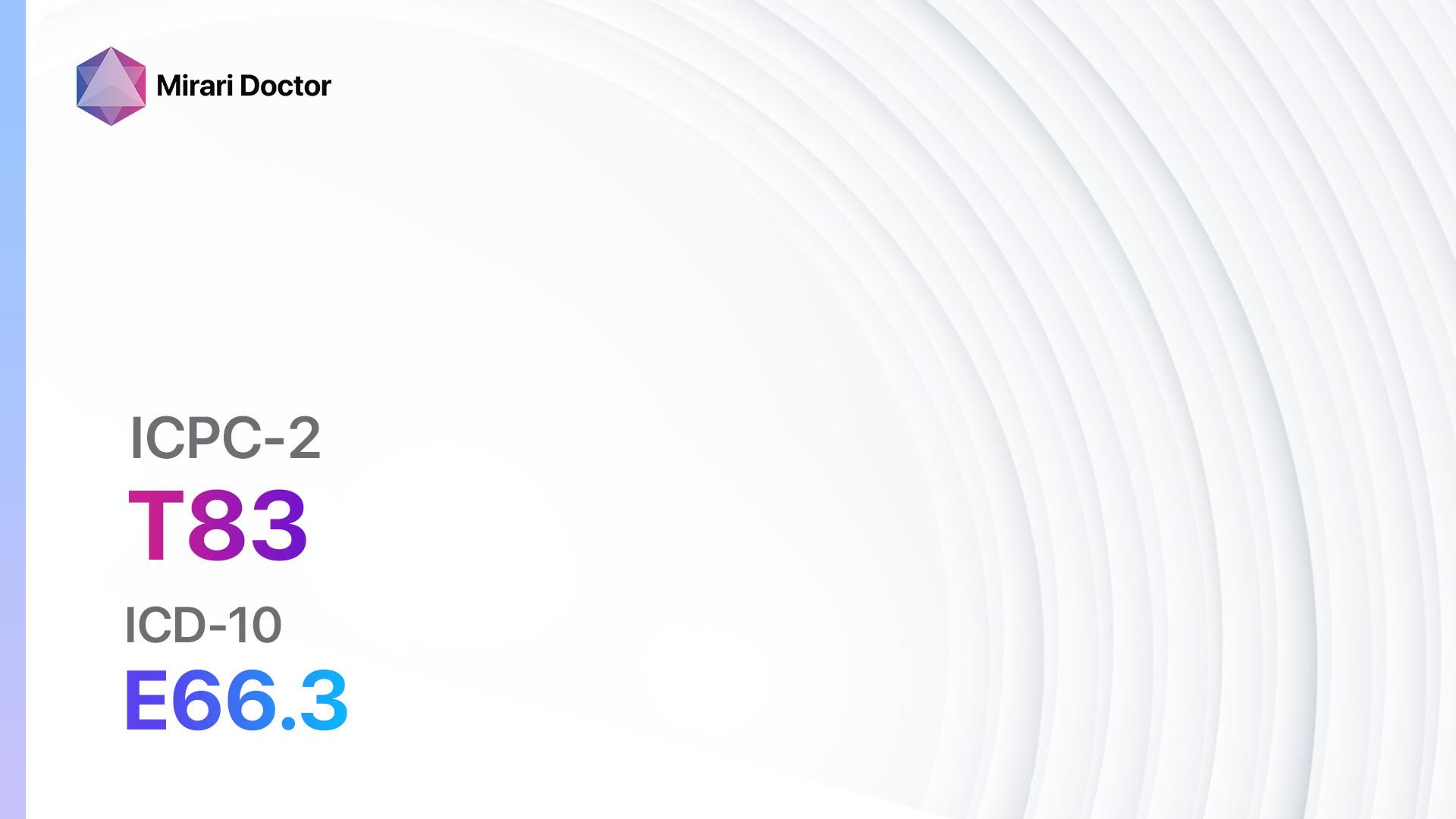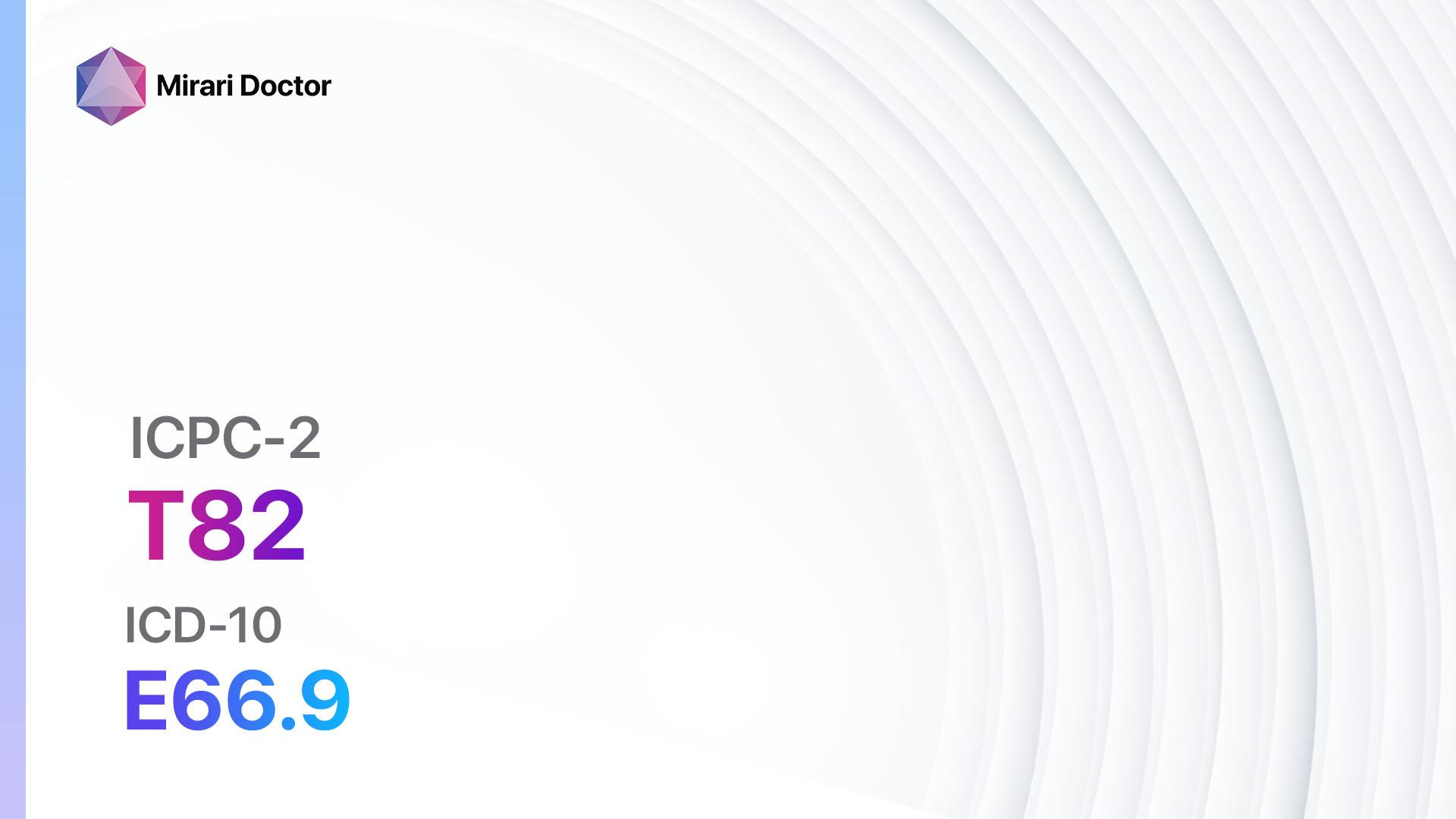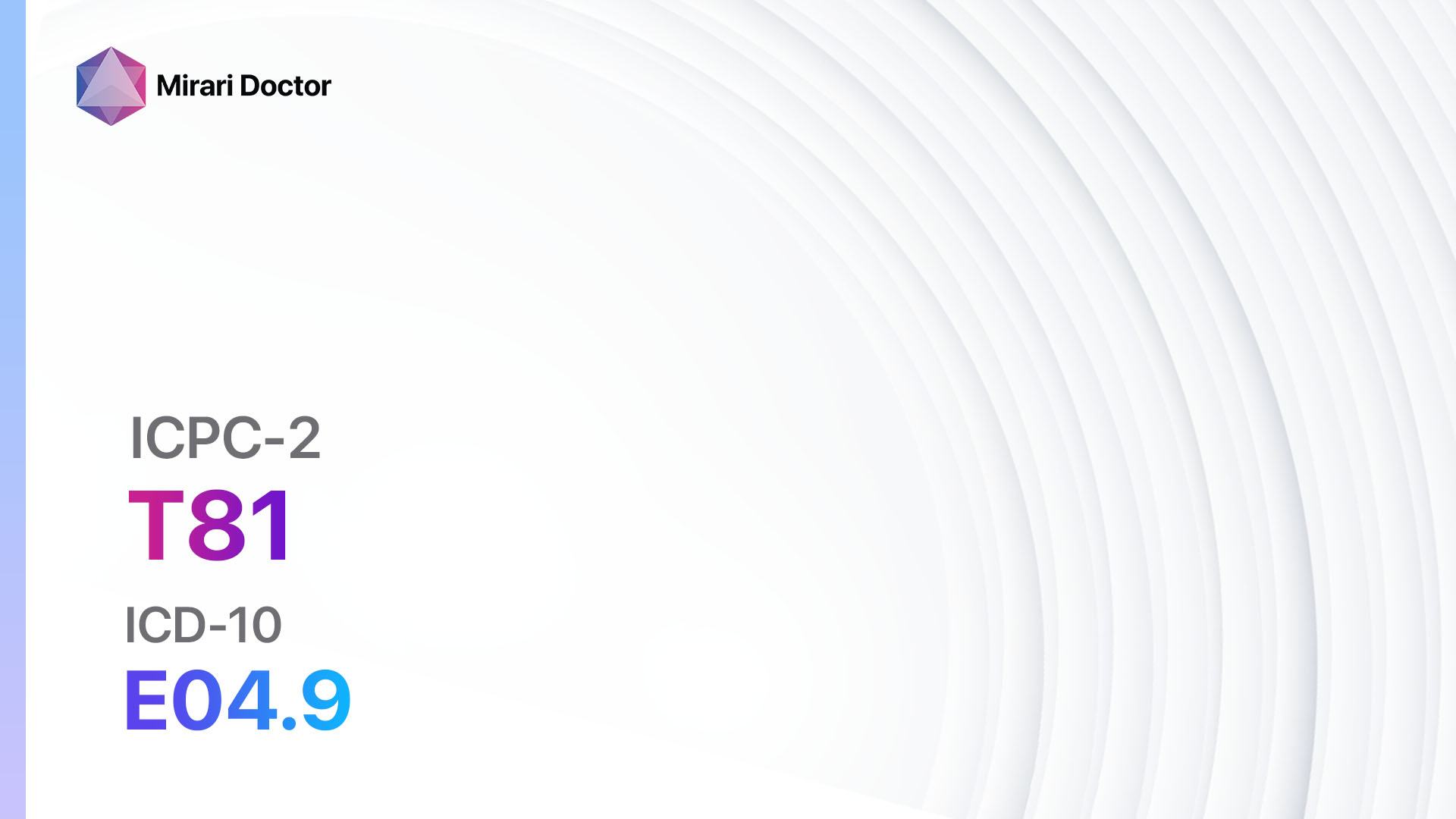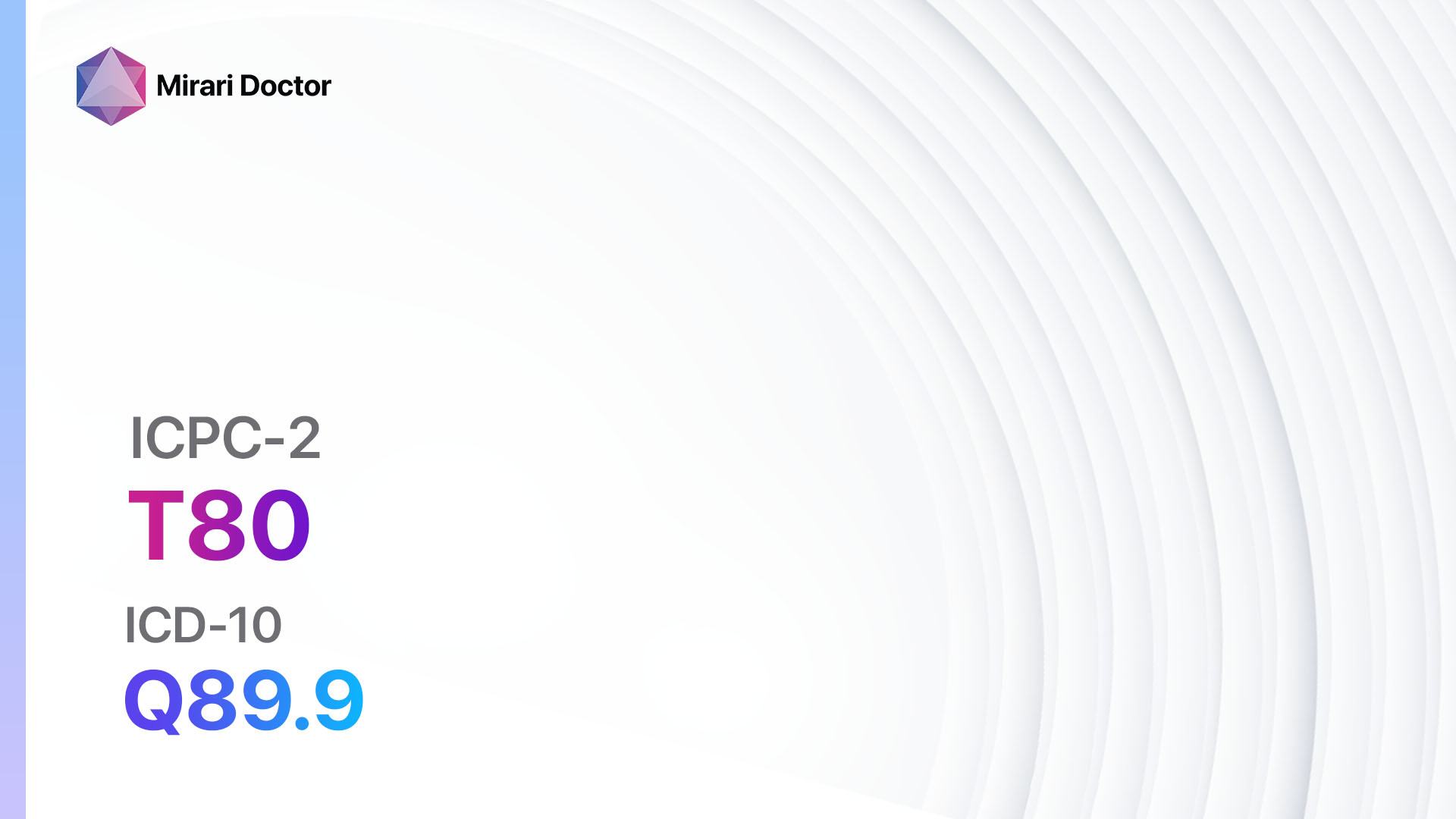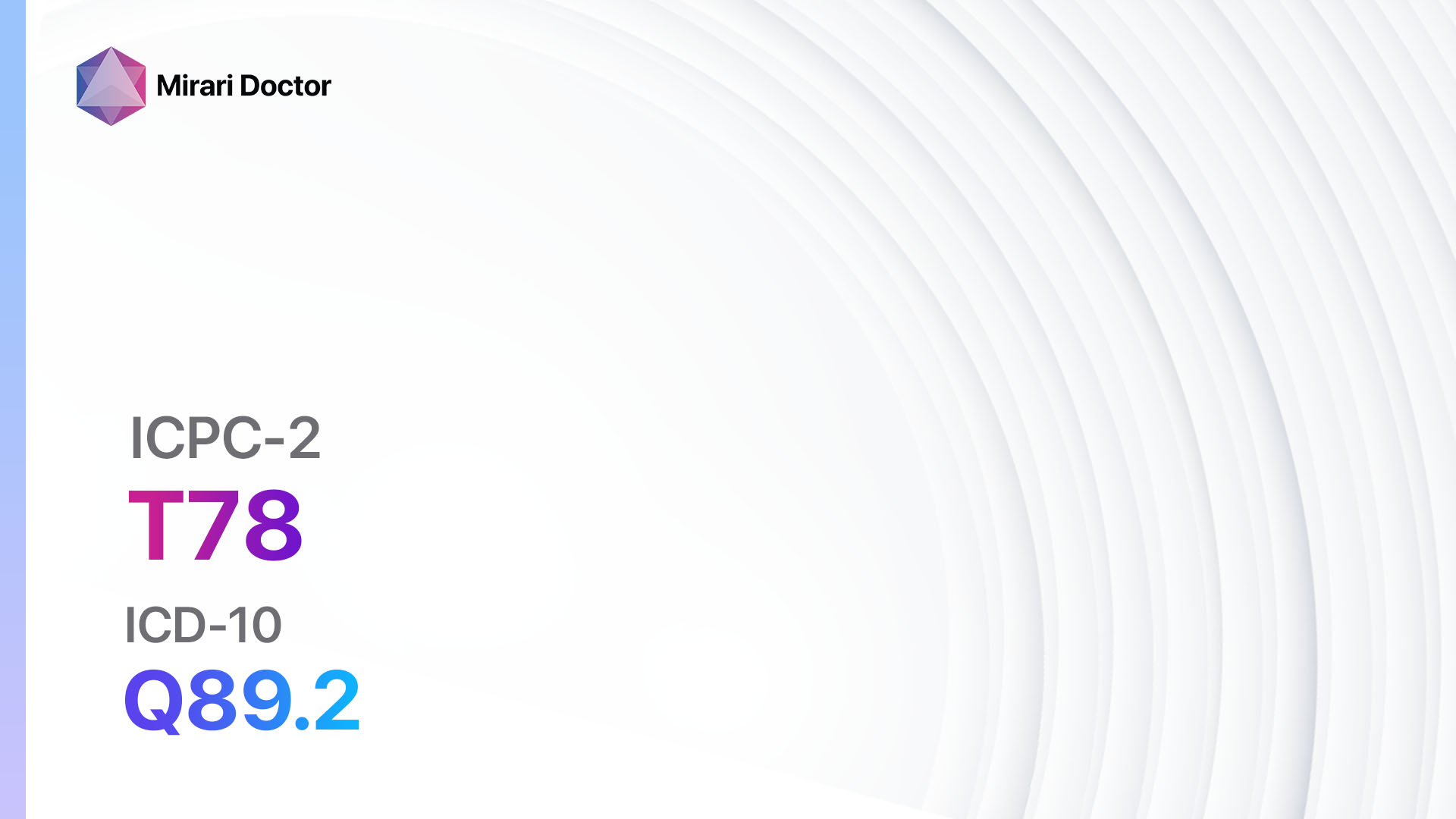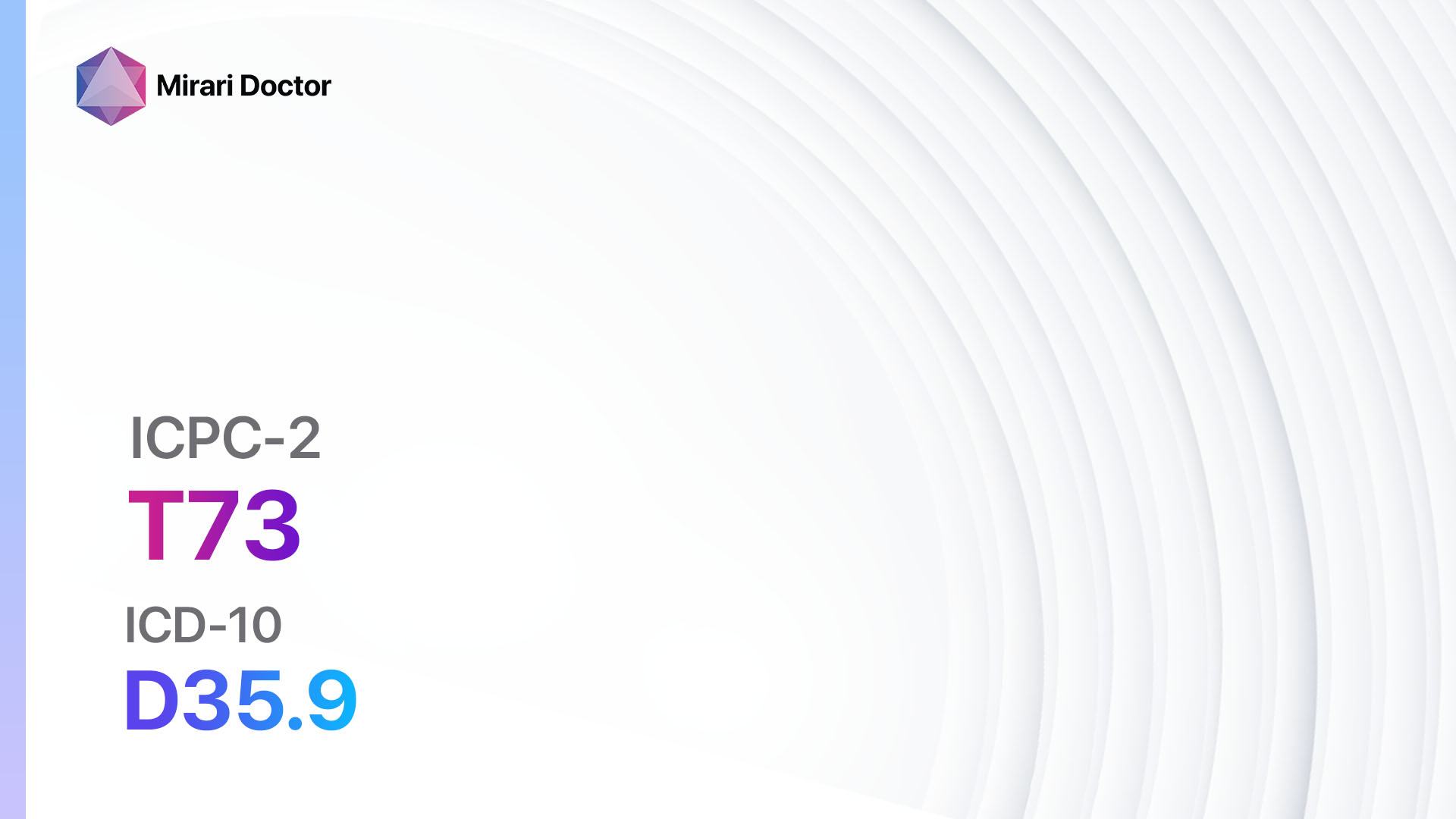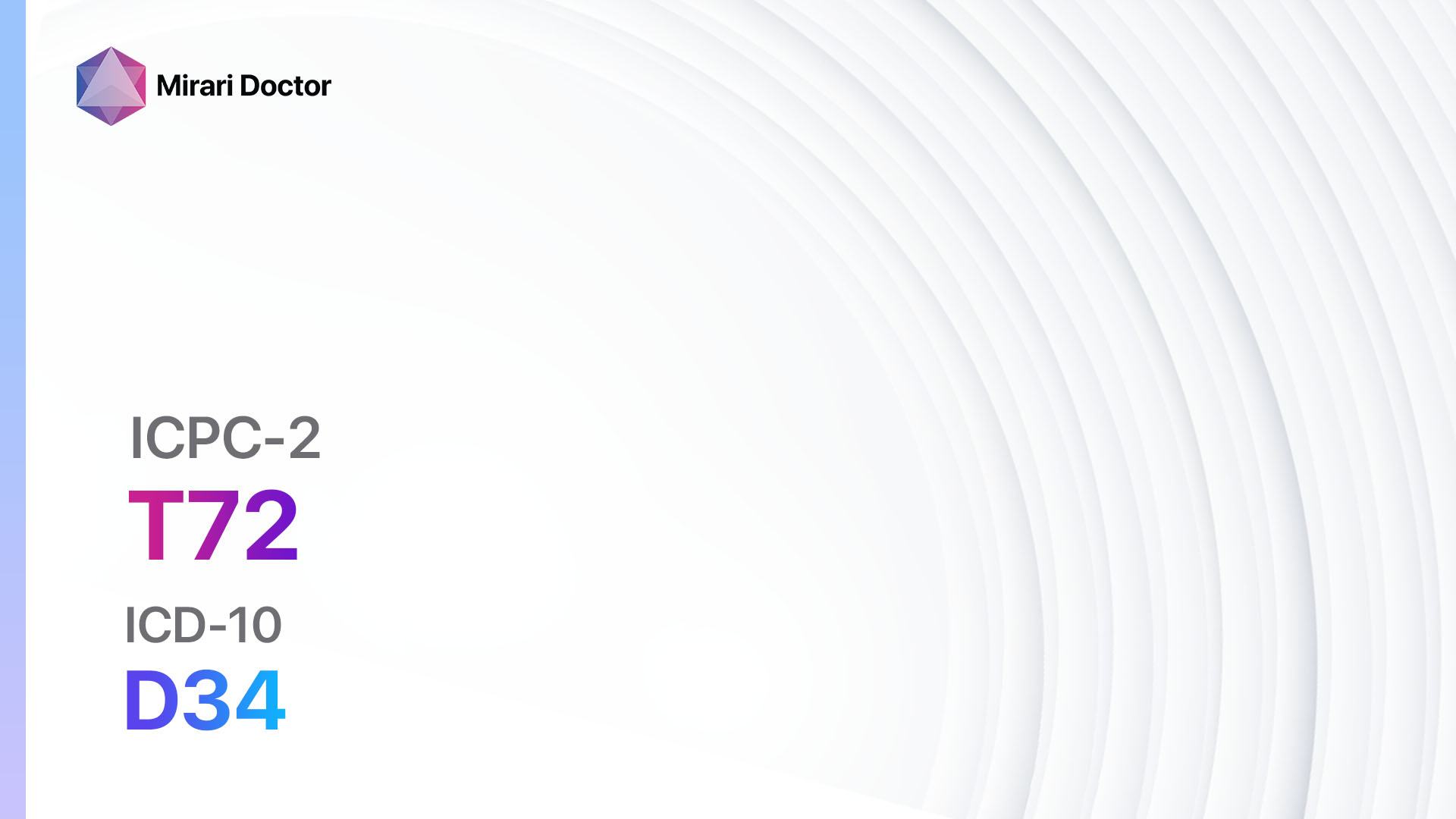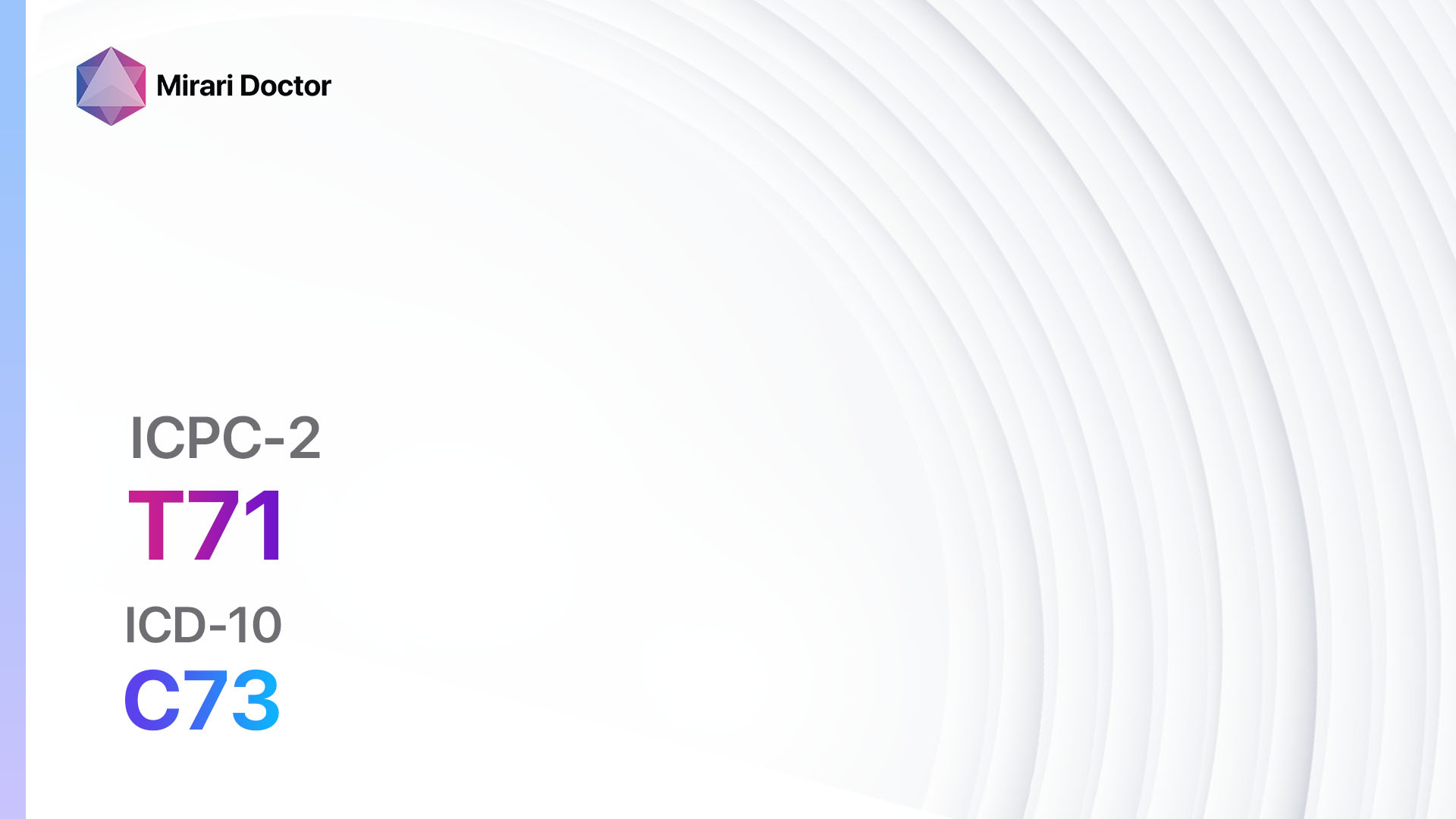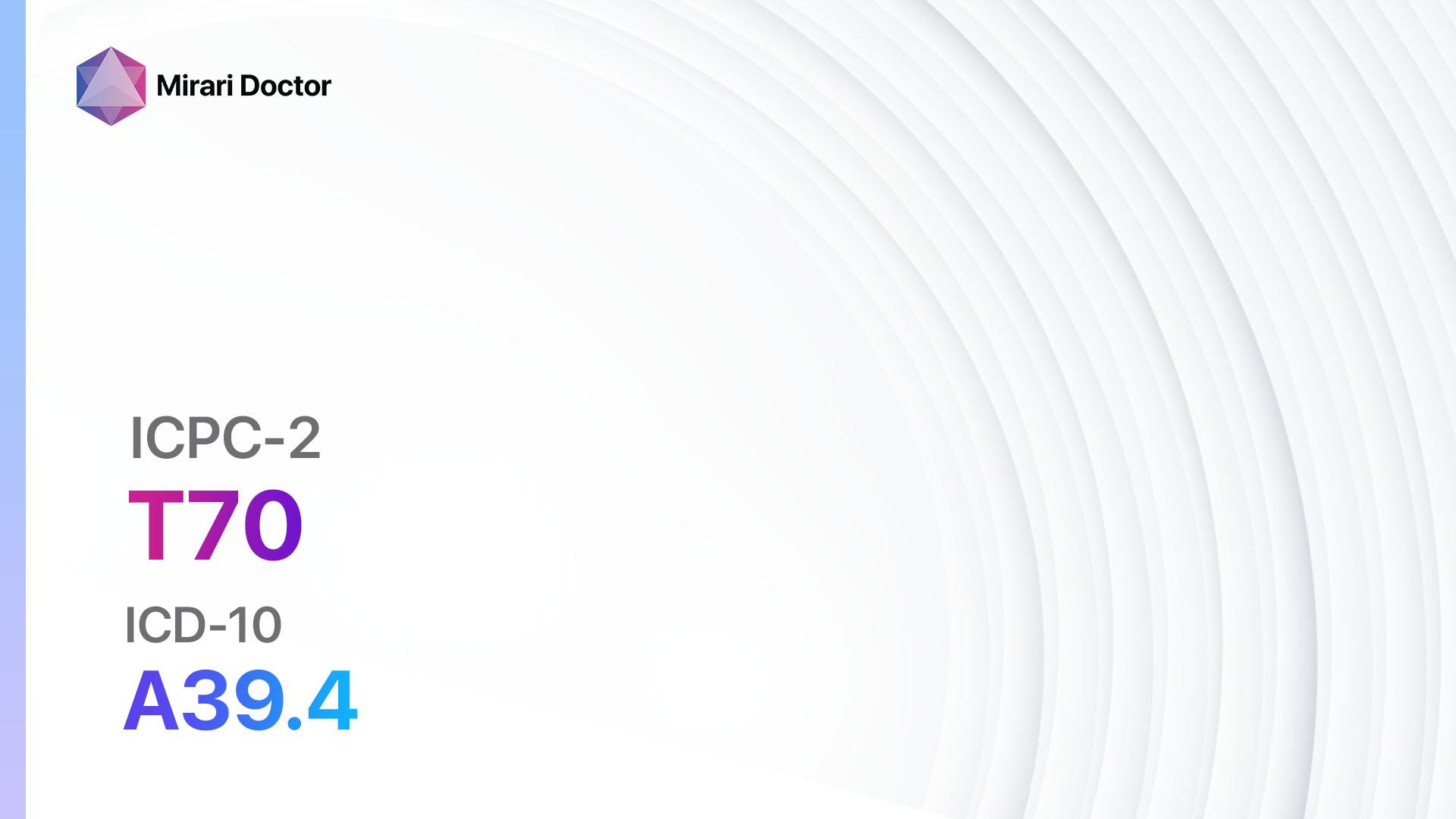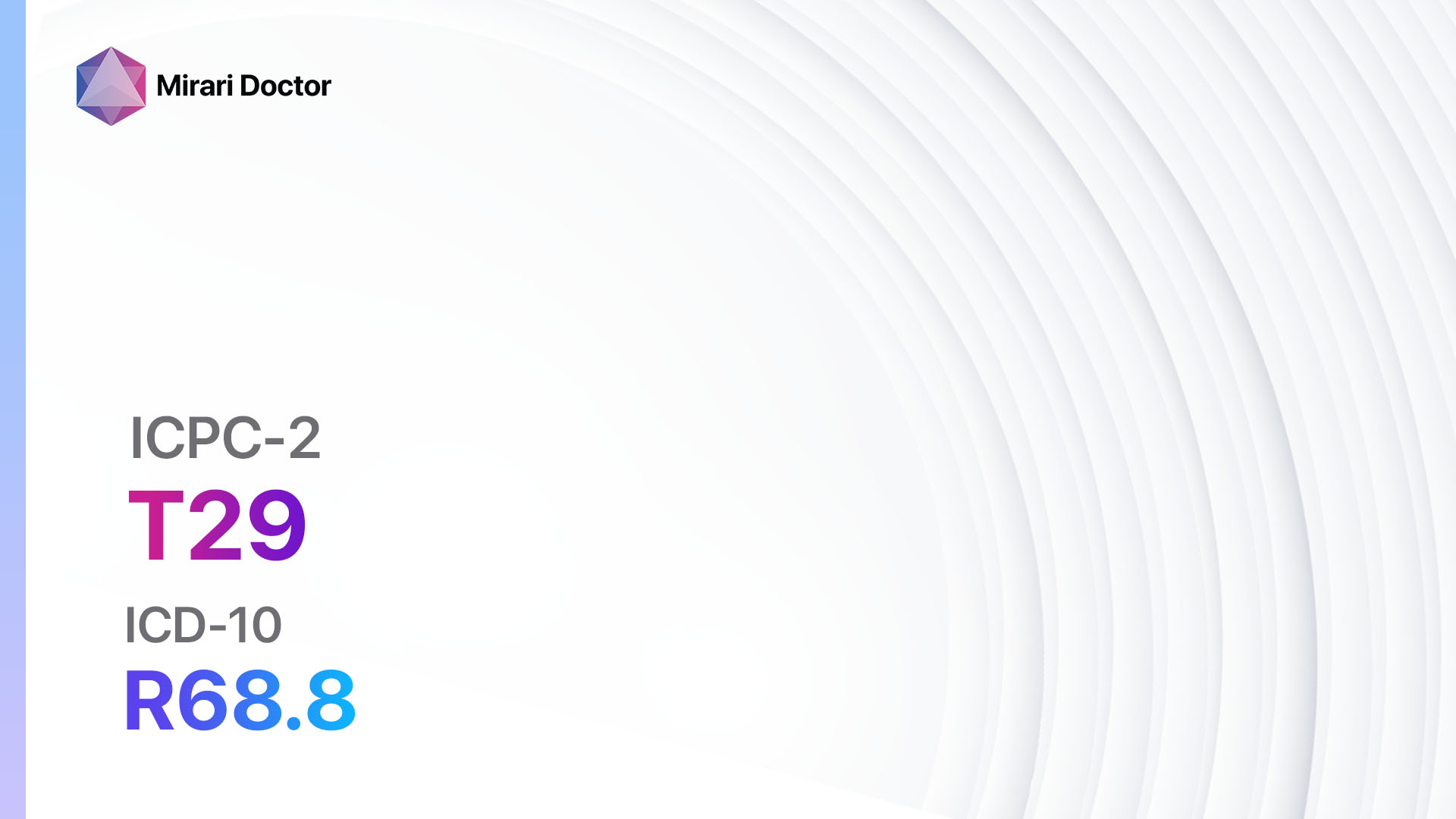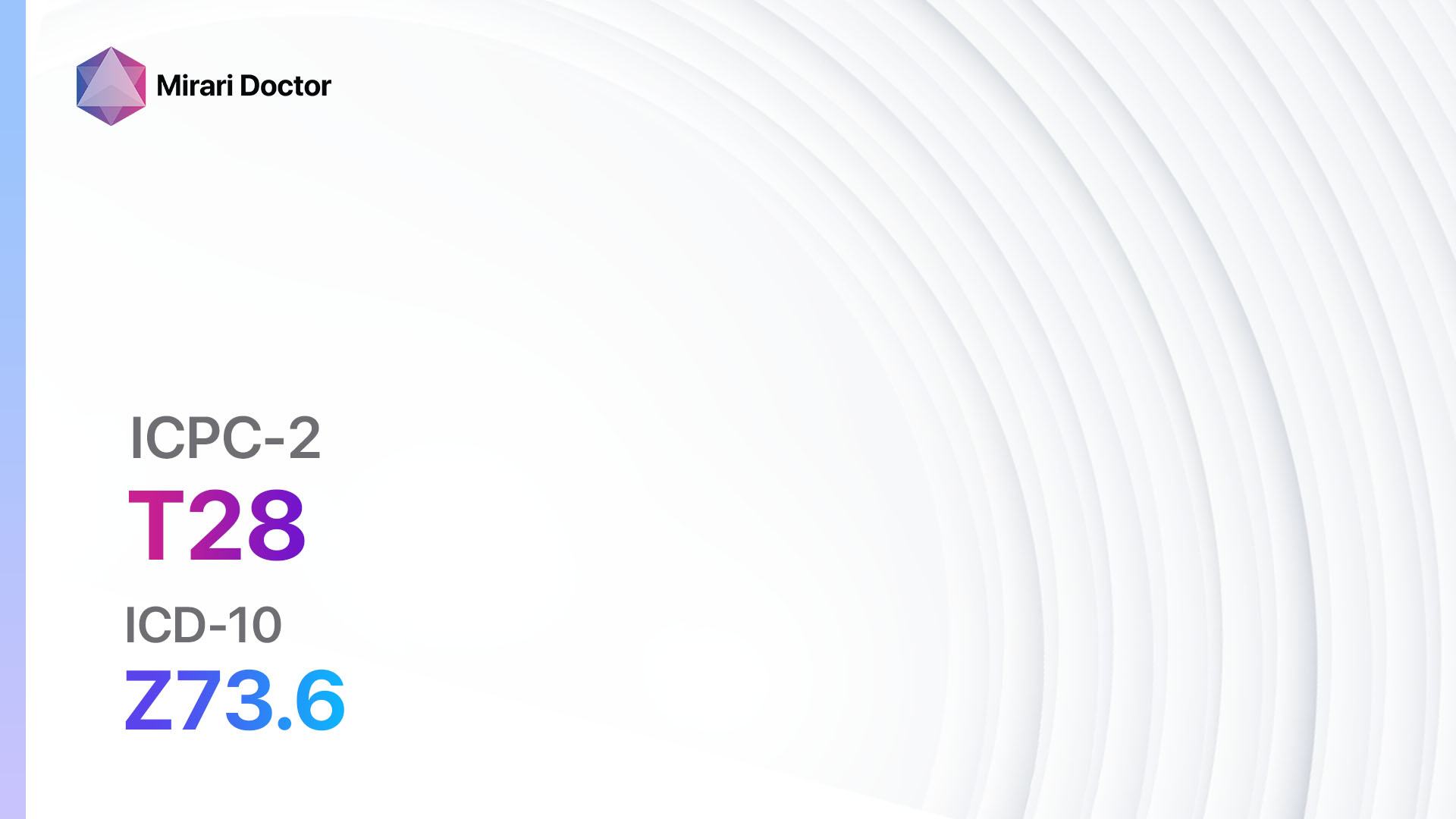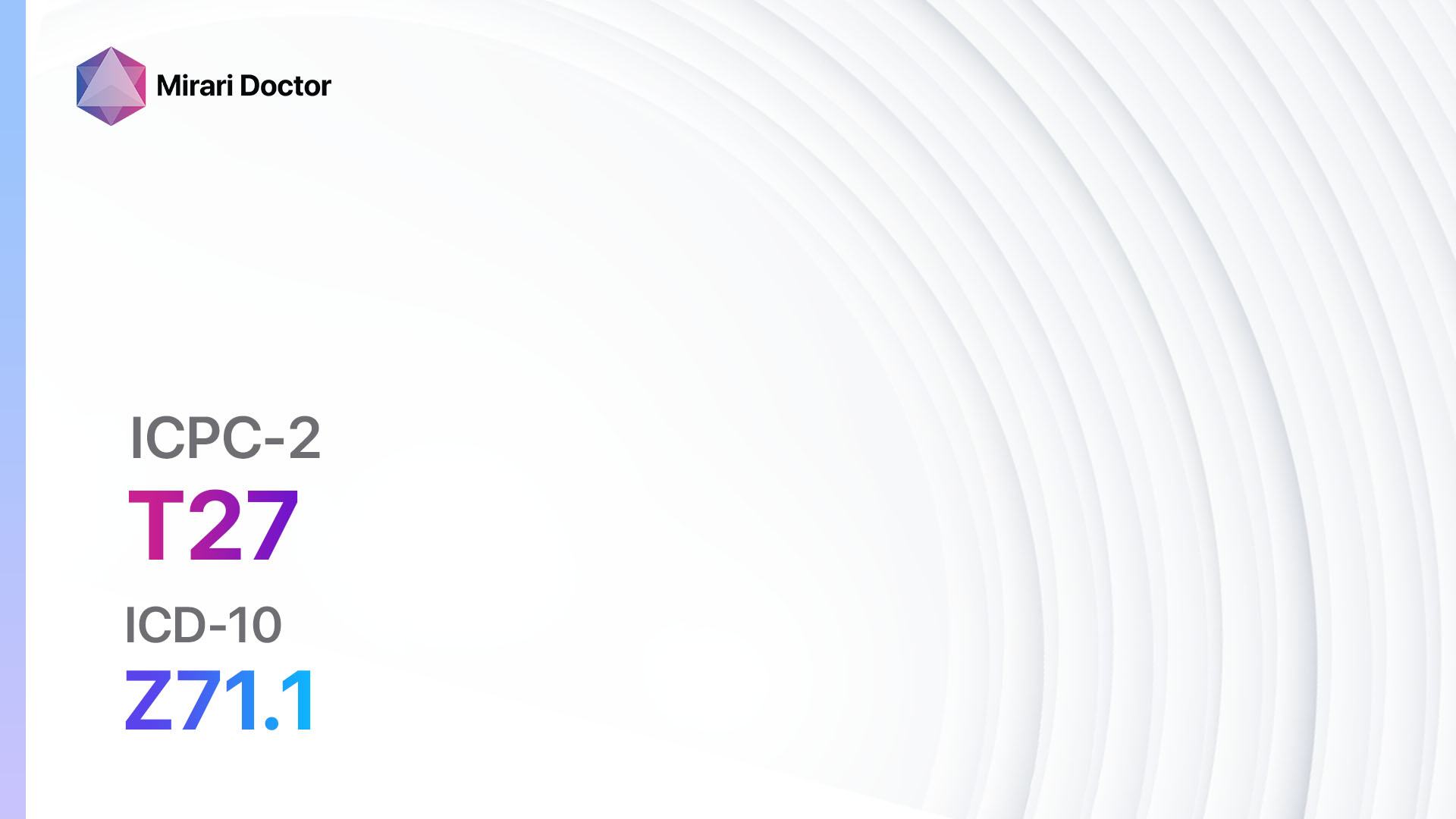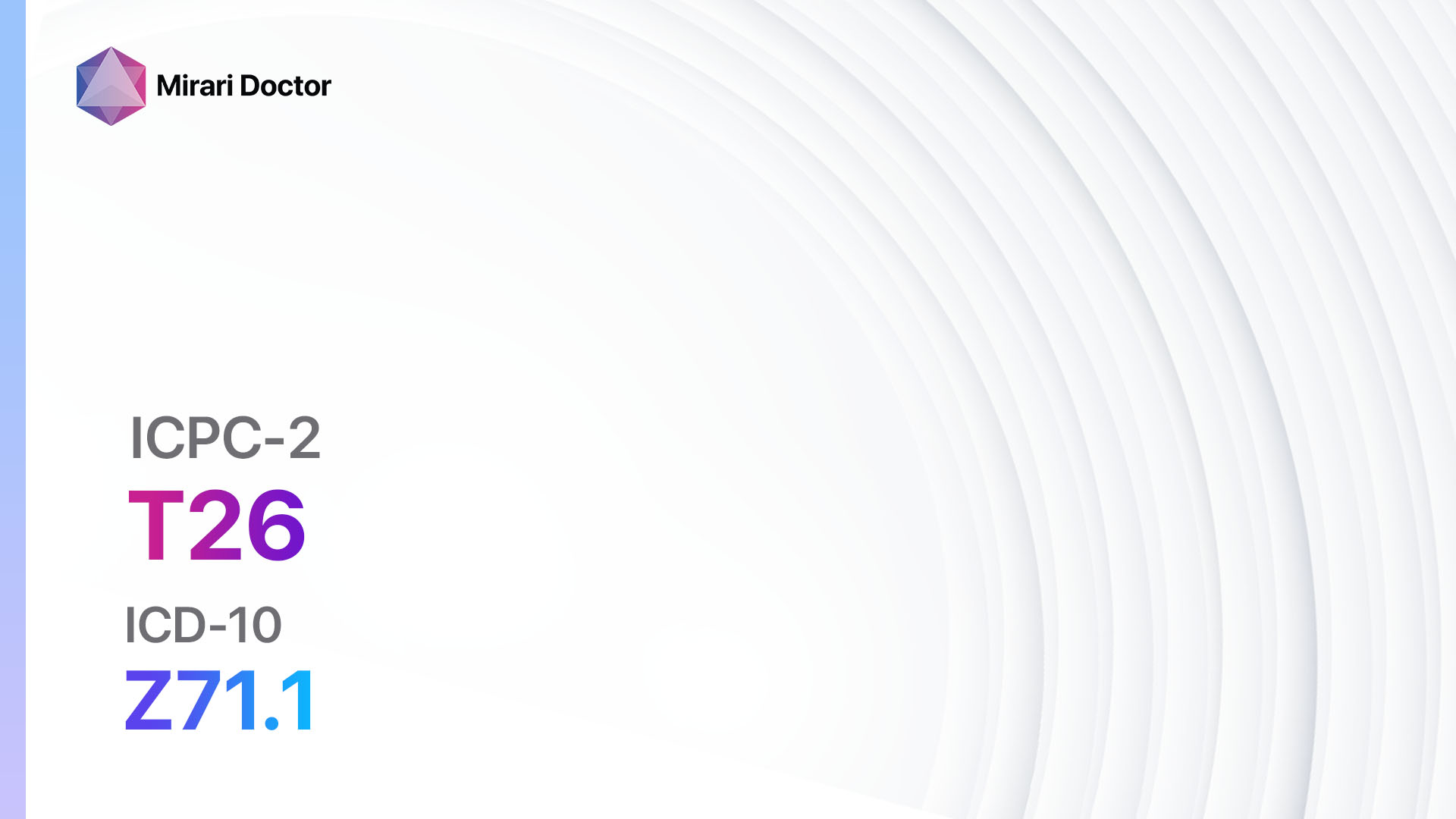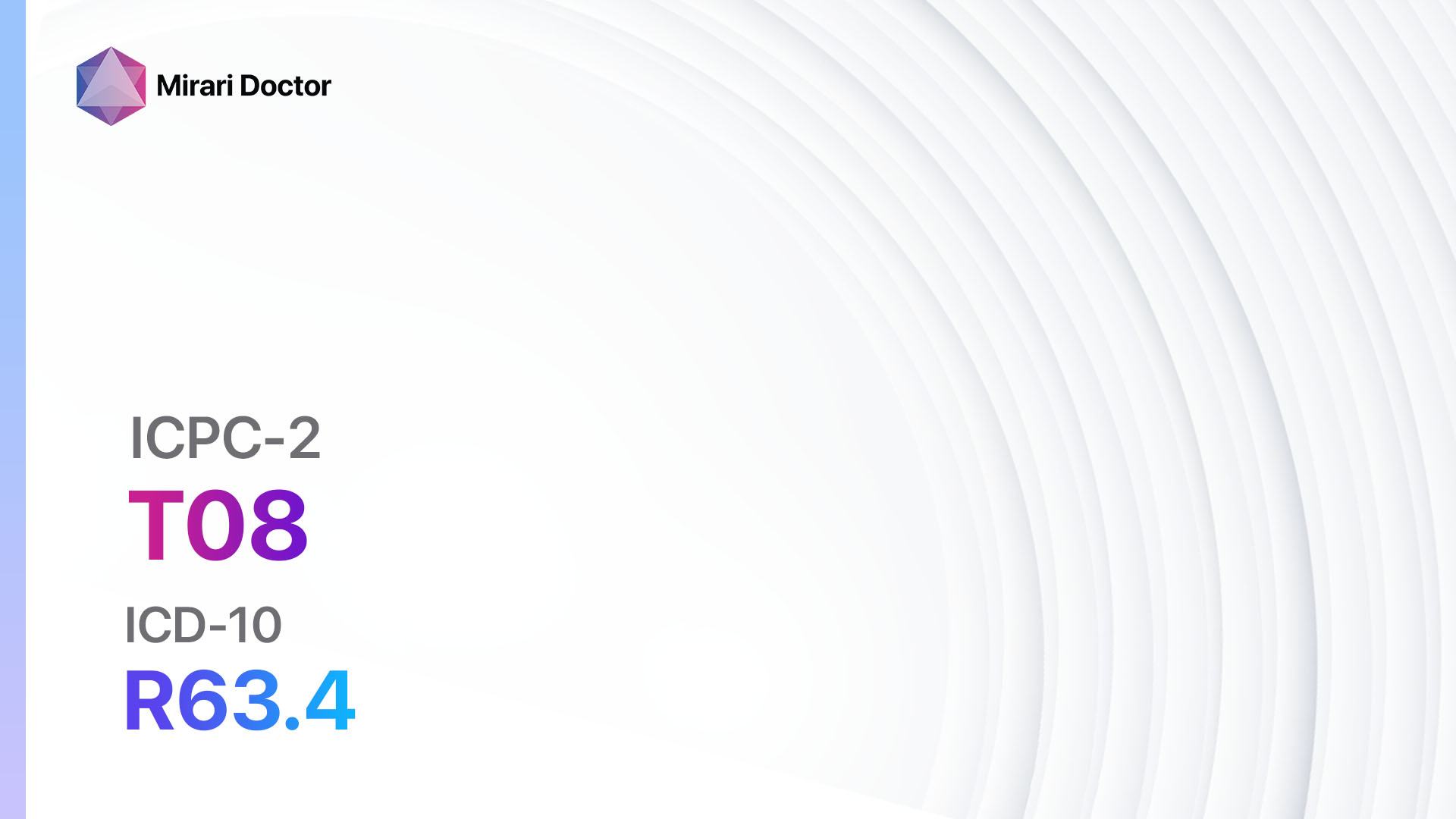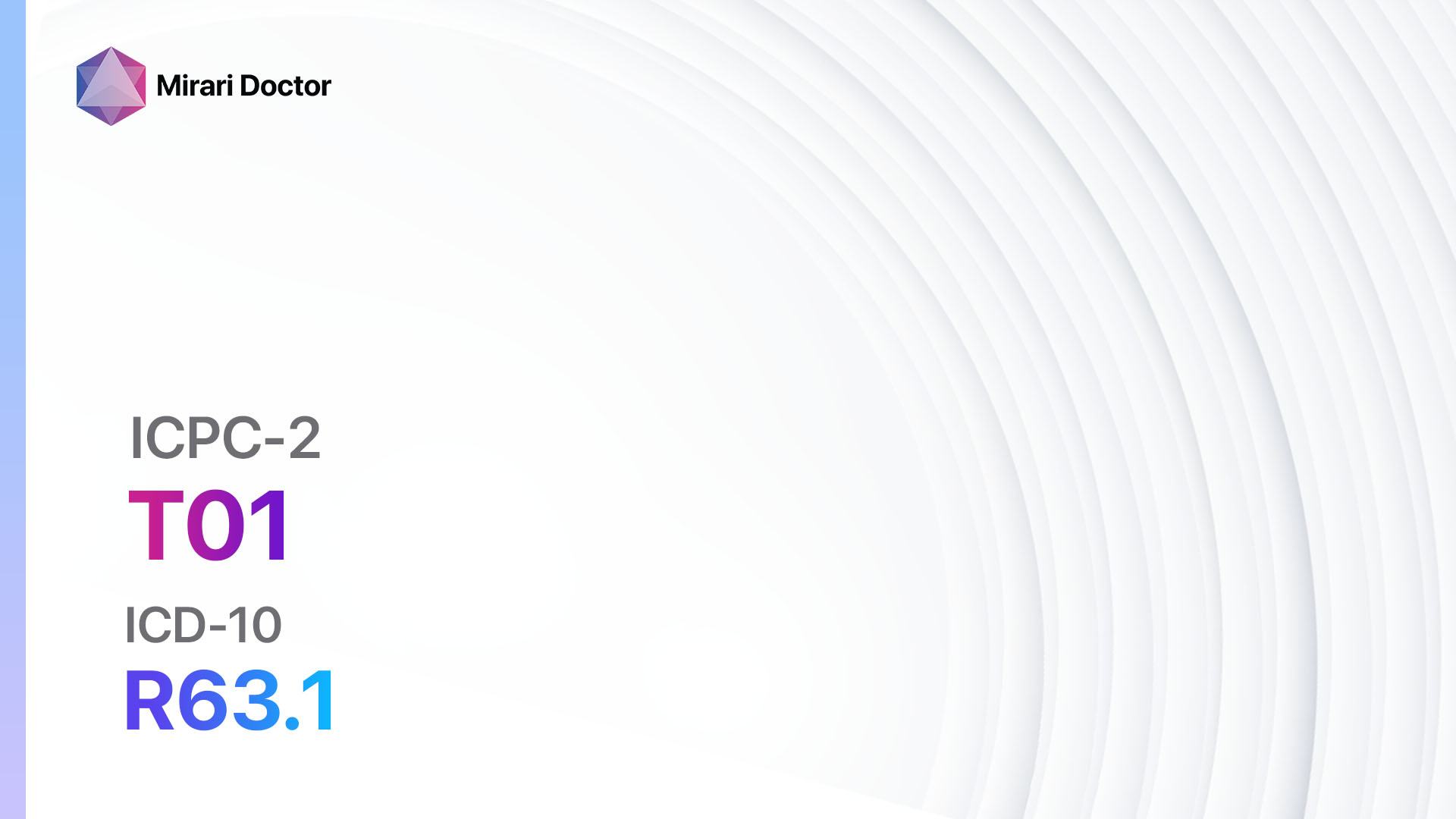
Introduction
Excessive thirst, also known as polydipsia, is a condition characterized by an abnormal increase in thirst. It can be a symptom of various underlying medical conditions[1]. This guide aims to provide a comprehensive overview of excessive thirst, including its symptoms, causes, diagnostic steps, possible interventions, and lifestyle modifications.
Codes
Symptoms
- Increased thirst: The individual experiences an intense and persistent desire to drink fluids[4].
- Frequent urination: Excessive thirst is often accompanied by increased frequency of urination[5].
- Dry mouth: The individual may feel a persistent dryness in the mouth[6].
- Fatigue: Excessive thirst can lead to feelings of tiredness and low energy levels[7].
- Weight loss: Unexplained weight loss may occur in some cases[8].
- Blurred vision: Excessive thirst can cause temporary vision changes[9].
Causes
- Diabetes mellitus: Both type 1 and type 2 diabetes can cause excessive thirst due to high blood sugar levels[10].
- Diabetes insipidus: This condition is characterized by the inability of the kidneys to conserve water, leading to excessive thirst and urination.
- Dehydration: Inadequate fluid intake or excessive fluid loss can result in excessive thirst.
- Medications: Certain medications, such as diuretics and antipsychotics, can cause excessive thirst as a side effect.
- Hypercalcemia: Elevated levels of calcium in the blood can lead to excessive thirst.
- Psychogenic polydipsia: Excessive thirst can be a symptom of a psychiatric disorder, such as schizophrenia.
Diagnostic Steps
Medical History
- Gather information about the patient’s symptoms, including the duration and severity of excessive thirst.
- Inquire about any underlying medical conditions, such as diabetes or kidney disease.
- Assess the patient’s fluid intake and output patterns.
- Identify any medications the patient is currently taking.
Physical Examination
- Measure the patient’s blood pressure and heart rate.
- Examine the oral cavity for signs of dryness or dehydration.
- Assess the skin for signs of poor hydration, such as dryness or decreased elasticity.
- Palpate the abdomen to check for any abnormalities in the kidneys or other organs.
Laboratory Tests
- Fasting blood glucose: Measure the patient’s blood sugar levels to screen for diabetes.
- Urinalysis: Evaluate the urine for glucose, ketones, and other abnormalities.
- Serum electrolytes: Check the levels of sodium, potassium, and calcium in the blood.
- Thyroid function tests: Assess thyroid hormone levels to rule out thyroid disorders.
- Renal function tests: Evaluate kidney function through blood tests, such as creatinine and blood urea nitrogen (BUN) levels.
- Serum osmolality: Measure the concentration of solutes in the blood to assess hydration status.
- ADH (antidiuretic hormone) test: Determine the levels of ADH to diagnose diabetes insipidus.
Diagnostic Imaging
- Magnetic resonance imaging (MRI): Used to visualize the pituitary gland and detect any abnormalities related to diabetes insipidus.
- Computed tomography (CT) scan: Can help identify structural abnormalities in the kidneys or other organs.
Other Tests
- Water deprivation test: In cases of suspected diabetes insipidus, this test involves withholding fluids to assess the body’s response to dehydration.
- Glucose tolerance test: Used to diagnose diabetes by measuring blood sugar levels before and after consuming a glucose solution.
Follow-up and Patient Education
- Schedule follow-up appointments to monitor the patient’s response to treatment and adjust interventions as needed.
- Educate the patient about the underlying cause of excessive thirst and the importance of adhering to treatment plans.
- Provide guidance on lifestyle modifications and self-care strategies to manage excessive thirst effectively.
Possible Interventions
Traditional Interventions
Medications:
Top 5 drugs for excessive thirst:
- Desmopressin (brand name: DDAVP):
- Cost: $50-$100 for a 30-day supply.
- Contraindications: Known hypersensitivity to desmopressin, severe renal impairment.
- Side effects: Headache, nausea, abdominal pain.
- Severe side effects: Hyponatremia, seizures.
- Drug interactions: NSAIDs, tricyclic antidepressants.
- Warning: Monitor sodium levels regularly.
- Metformin (brand name: Glucophage):
- Cost: $10-$50 for a 30-day supply.
- Contraindications: Severe renal impairment, liver disease.
- Side effects: Nausea, diarrhea, metallic taste.
- Severe side effects: Lactic acidosis, vitamin B12 deficiency.
- Drug interactions: Alcohol, cimetidine.
- Warning: Monitor renal function and vitamin B12 levels.
- Chlorpropamide (brand name: Diabinese):
- Cost: $20-$50 for a 30-day supply.
- Contraindications: Diabetic ketoacidosis, severe renal or hepatic impairment.
- Side effects: Hypoglycemia, gastrointestinal upset.
- Severe side effects: Hemolytic anemia, liver toxicity.
- Drug interactions: Alcohol, NSAIDs.
- Warning: Risk of hypoglycemia.
- Thiazide diuretics (e.g., hydrochlorothiazide):
- Cost: $10-$30 for a 30-day supply.
- Contraindications: Anuria, severe renal impairment.
- Side effects: Hypokalemia, increased uric acid levels.
- Severe side effects: Electrolyte imbalance, pancreatitis.
- Drug interactions: NSAIDs, lithium.
- Warning: Monitor electrolyte levels regularly.
- Antipsychotics (e.g., olanzapine, risperidone):
- Cost: $50-$200 for a 30-day supply.
- Contraindications: Known hypersensitivity to antipsychotics, dementia-related psychosis.
- Side effects: Weight gain, sedation, extrapyramidal symptoms.
- Severe side effects: Neuroleptic malignant syndrome, tardive dyskinesia.
- Drug interactions: Other antipsychotics, benzodiazepines.
- Warning: Increased risk of mortality in elderly patients with dementia.
Alternative Drugs:
- Diuretics (e.g., furosemide): Can be used to manage excessive thirst caused by fluid retention.
- Angiotensin receptor blockers (e.g., losartan): May be prescribed for excessive thirst associated with high blood pressure.
- Nonsteroidal anti-inflammatory drugs (NSAIDs) (e.g., ibuprofen): Can help reduce inflammation and alleviate symptoms of excessive thirst.
Surgical Procedures:
- Surgery is not typically indicated for the treatment of excessive thirst. However, in cases where an underlying condition requires surgical intervention, the appropriate procedure will be determined based on the specific diagnosis.
Alternative Interventions
- Acupuncture: May help alleviate symptoms of excessive thirst by promoting relaxation and balancing the body’s energy flow. Cost: $60-$120 per session.
- Herbal remedies: Certain herbs, such as cinnamon and fenugreek, have been traditionally used to manage excessive thirst. Cost: Varies depending on the specific herb and preparation.
- Mind-body techniques: Practices like meditation and yoga can help reduce stress and improve overall well-being, potentially alleviating symptoms of excessive thirst. Cost: Varies depending on the class or program.
- Dietary modifications: Avoiding foods and beverages that can exacerbate thirst, such as caffeine and alcohol, may help manage excessive thirst. Cost: Varies depending on individual food choices.
Lifestyle Interventions
- Increase fluid intake: Encourage the patient to drink an adequate amount of water throughout the day to maintain hydration.
- Avoid excessive salt intake: Consuming a low-sodium diet can help prevent fluid retention and excessive thirst.
- Regular exercise: Engaging in physical activity can help regulate blood sugar levels and improve overall health.
- Stress management: Encourage stress-reducing activities, such as meditation or deep breathing exercises, to help manage excessive thirst.
- Regular monitoring: Advise the patient to regularly monitor their blood sugar levels or other relevant parameters as directed by their healthcare provider.
It is important to note that the cost ranges provided are approximate and may vary depending on the location and availability of the interventions.
Mirari Cold Plasma Alternative Intervention
Understanding Mirari Cold Plasma
- Safe and Non-Invasive Treatment: Mirari Cold Plasma is a safe and non-invasive treatment option for various skin conditions. It does not require incisions, minimizing the risk of scarring, bleeding, or tissue damage.
- Efficient Extraction of Foreign Bodies: Mirari Cold Plasma facilitates the removal of foreign bodies from the skin by degrading and dissociating organic matter, allowing easier access and extraction.
- Pain Reduction and Comfort: Mirari Cold Plasma has a local analgesic effect, providing pain relief during the treatment, making it more comfortable for the patient.
- Reduced Risk of Infection: Mirari Cold Plasma has antimicrobial properties, effectively killing bacteria and reducing the risk of infection.
- Accelerated Healing and Minimal Scarring: Mirari Cold Plasma stimulates wound healing and tissue regeneration, reducing healing time and minimizing the formation of scars.
Mirari Cold Plasma Prescription
Video instructions for using Mirari Cold Plasma Device – T01 Excessive thirst (ICD-10:R63.1)
| Mild | Moderate | Severe |
| Mode setting: 2 (Wound Healing) Location: 4 (Heart, Bile & Pancreas) Morning: 15 minutes, Evening: 15 minutes |
Mode setting: 2 (Wound Healing) Location: 4 (Heart, Bile & Pancreas) Morning: 30 minutes, Lunch: 30 minutes, Evening: 30 minutes |
Mode setting: 2 (Wound Healing) Location: 4 (Heart, Bile & Pancreas) Morning: 30 minutes, Lunch: 30 minutes, Evening: 30 minutes |
| Mode setting: 4 (Diabetes) Location: 4 (Heart, Bile & Pancreas) Morning: 15 minutes, Evening: 15 minutes |
Mode setting: 4 (Diabetes) Location: 4 (Heart, Bile & Pancreas) Morning: 30 minutes, Lunch: 30 minutes, Evening: 30 minutes |
Mode setting: 4 (Diabetes) Location: 4 (Heart, Bile & Pancreas) Morning: 30 minutes, Lunch: 30 minutes, Evening: 30 minutes |
| Mode setting: 3 (Antiviral Therapy) Location: 0 (Localized) Morning: 15 minutes, Evening: 15 minutes |
Mode setting: 3 (Antiviral Therapy) Location: 0 (Localized) Morning: 30 minutes, Lunch: 30 minutes, Evening: 30 minutes |
Mode setting: 3 (Antiviral Therapy) Location: 0 (Localized) Morning: 30 minutes, Lunch: 30 minutes, Evening: 30 minutes |
| Total Morning: 45 minutes approx. $7.50 USD, Evening: 45 minutes approx. $7.50 USD |
Total Morning: 90 minutes approx. $15 USD, Lunch: 90 minutes approx. $15 USD, Evening: 90 minutes approx. $15 USD |
Total Morning: 90 minutes approx. $15 USD, Lunch: 90 minutes approx. $15 USD, Evening: 90 minutes approx. $15 USD |
| Usual treatment for 7-60 days approx. $105 USD – $900 USD | Usual treatment for 6-8 weeks approx. $1,890 USD – $2,520 USD |
Usual treatment for 3-6 months approx. $4,050 USD – $8,100 USD
|
 |
|
Use the Mirari Cold Plasma device to treat Excessive thirst effectively.
WARNING: MIRARI COLD PLASMA IS DESIGNED FOR THE HUMAN BODY WITHOUT ANY ARTIFICIAL OR THIRD PARTY PRODUCTS. USE OF OTHER PRODUCTS IN COMBINATION WITH MIRARI COLD PLASMA MAY CAUSE UNPREDICTABLE EFFECTS, HARM OR INJURY. PLEASE CONSULT A MEDICAL PROFESSIONAL BEFORE COMBINING ANY OTHER PRODUCTS WITH USE OF MIRARI.
Step 1: Cleanse the Skin
- Start by cleaning the affected area of the skin with a gentle cleanser or mild soap and water. Gently pat the area dry with a clean towel.
Step 2: Prepare the Mirari Cold Plasma device
- Ensure that the Mirari Cold Plasma device is fully charged or has fresh batteries as per the manufacturer’s instructions. Make sure the device is clean and in good working condition.
- Switch on the Mirari device using the power button or by following the specific instructions provided with the device.
- Some Mirari devices may have adjustable settings for intensity or treatment duration. Follow the manufacturer’s instructions to select the appropriate settings based on your needs and the recommended guidelines.
Step 3: Apply the Device
- Place the Mirari device in direct contact with the affected area of the skin. Gently glide or hold the device over the skin surface, ensuring even coverage of the area experiencing.
- Slowly move the Mirari device in a circular motion or follow a specific pattern as indicated in the user manual. This helps ensure thorough treatment coverage.
Step 4: Monitor and Assess:
- Keep track of your progress and evaluate the effectiveness of the Mirari device in managing your Excessive thirst. If you have any concerns or notice any adverse reactions, consult with your health care professional.
Note
This guide is for informational purposes only and should not replace the advice of a medical professional. Always consult with your healthcare provider or a qualified medical professional for personal advice, diagnosis, or treatment. Do not solely rely on the information presented here for decisions about your health. Use of this information is at your own risk. The authors of this guide, nor any associated entities or platforms, are not responsible for any potential adverse effects or outcomes based on the content.
Mirari Cold Plasma System Disclaimer
- Purpose: The Mirari Cold Plasma System is a Class 2 medical device designed for use by trained healthcare professionals. It is registered for use in Thailand and Vietnam. It is not intended for use outside of these locations.
- Informational Use: The content and information provided with the device are for educational and informational purposes only. They are not a substitute for professional medical advice or care.
- Variable Outcomes: While the device is approved for specific uses, individual outcomes can differ. We do not assert or guarantee specific medical outcomes.
- Consultation: Prior to utilizing the device or making decisions based on its content, it is essential to consult with a Certified Mirari Tele-Therapist and your medical healthcare provider regarding specific protocols.
- Liability: By using this device, users are acknowledging and accepting all potential risks. Neither the manufacturer nor the distributor will be held accountable for any adverse reactions, injuries, or damages stemming from its use.
- Geographical Availability: This device has received approval for designated purposes by the Thai and Vietnam FDA. As of now, outside of Thailand and Vietnam, the Mirari Cold Plasma System is not available for purchase or use.
References
- Guyton, A. C., & Hall, J. E. (2016). Textbook of medical physiology (13th ed.). Elsevier.
- WONCA International Classification Committee. (1998). ICPC-2: International Classification of Primary Care (2nd ed.). Oxford University Press.
- World Health Organization. (2019). International Statistical Classification of Diseases and Related Health Problems (11th ed.).
- Bichet, D. G. (2018). Polyuria and Polydipsia. In J. L. Jameson, A. S. Fauci, D. L. Kasper, S. L. Hauser, D. L. Longo, & J. Loscalzo (Eds.), Harrison’s Principles of Internal Medicine (20th ed.). McGraw-Hill Education.
- Verbalis, J. G. (2003). Disorders of body water homeostasis. Best Practice & Research Clinical Endocrinology & Metabolism, 17(4), 471-503.
- Guyton, A. C., & Hall, J. E. (2016). Textbook of medical physiology (13th ed.). Elsevier.
- Verbalis, J. G. (2003). Disorders of body water homeostasis. Best Practice & Research Clinical Endocrinology & Metabolism, 17(4), 471-503.
- Guyton, A. C., & Hall, J. E. (2016). Textbook of medical physiology (13th ed.). Elsevier.
- American Diabetes Association. (2021). 2. Classification and Diagnosis of Diabetes: Standards of Medical Care in Diabetes—2021. Diabetes Care, 44(Supplement 1), S15-S33.
- Popkin, B. M., D’Anci, K. E., & Rosenberg, I. H. (2010). Water, hydration, and health. Nutrition Reviews, 68(8), 439-458.
Related articles
Made in USA


